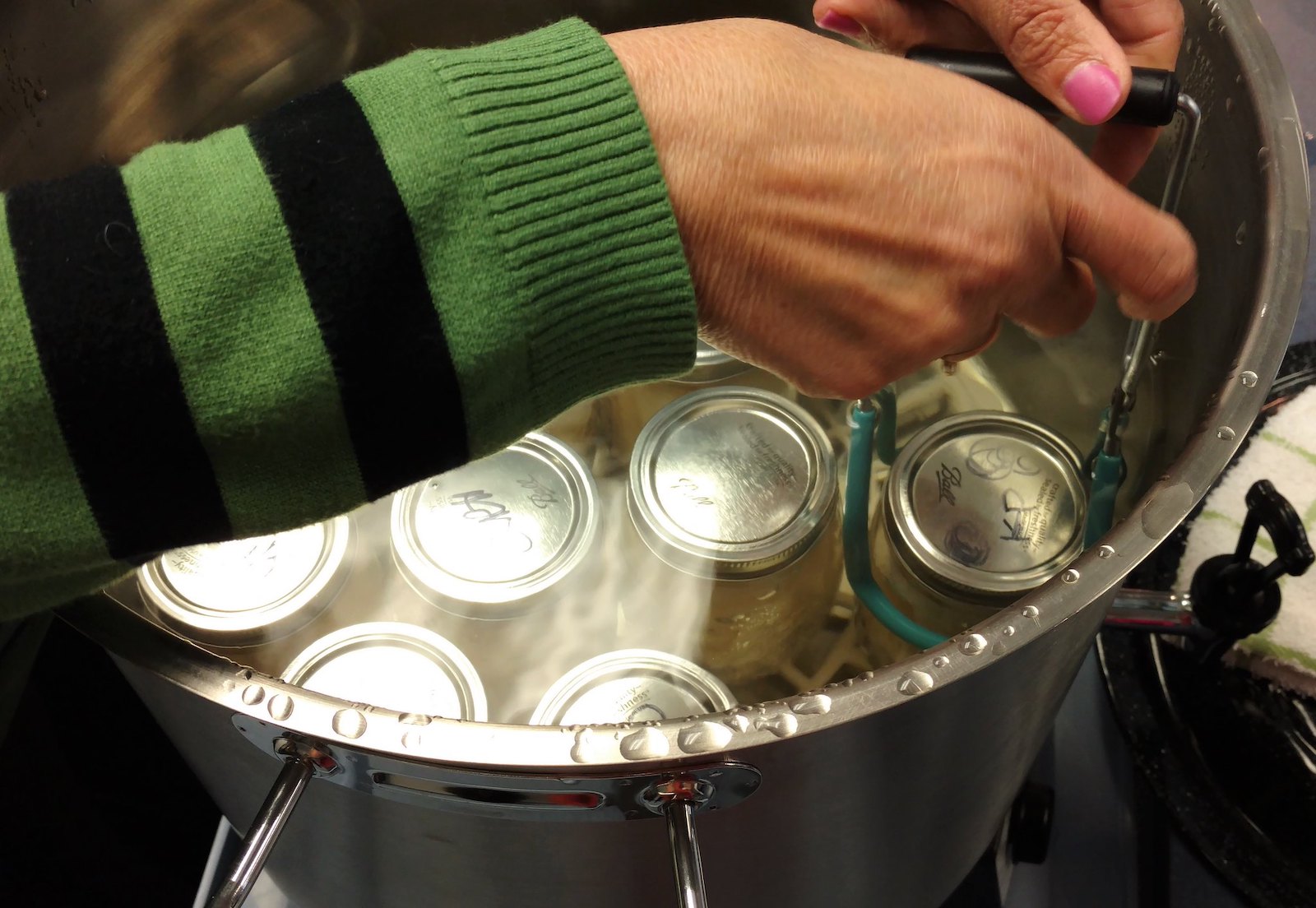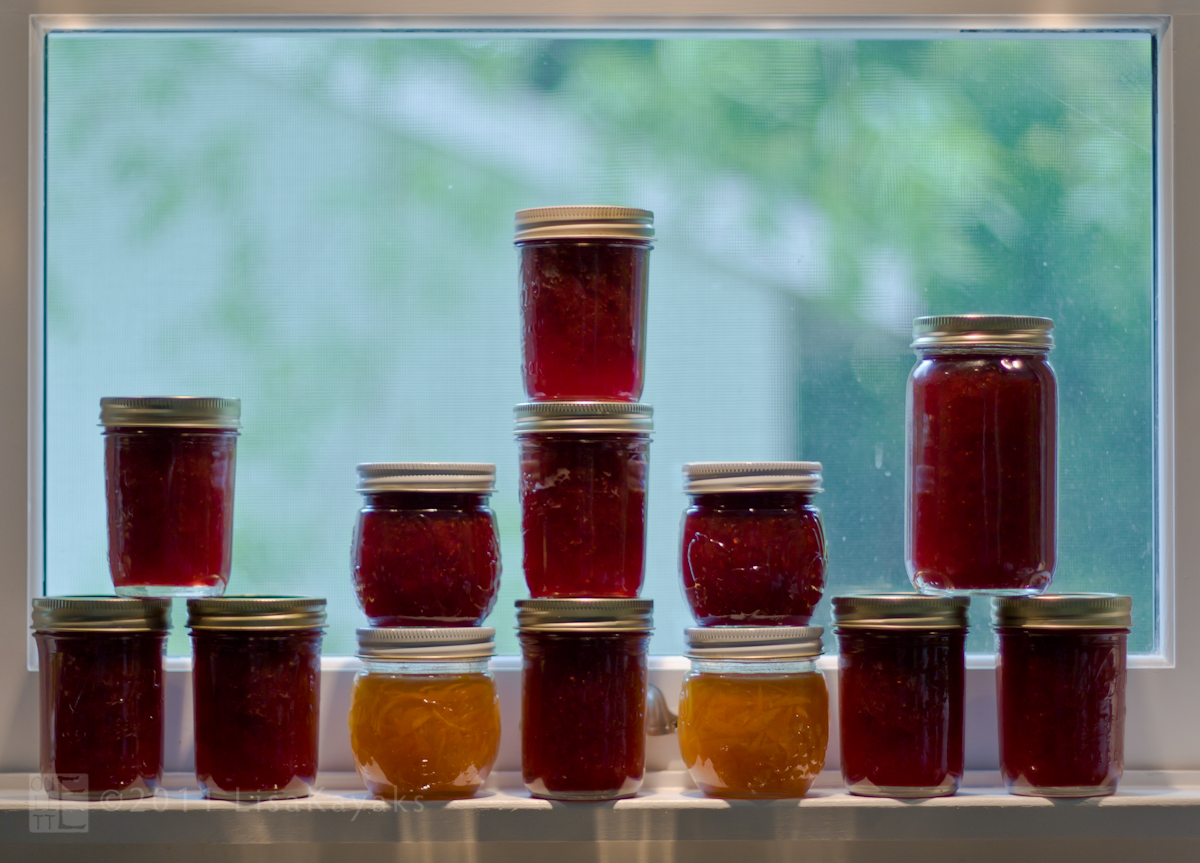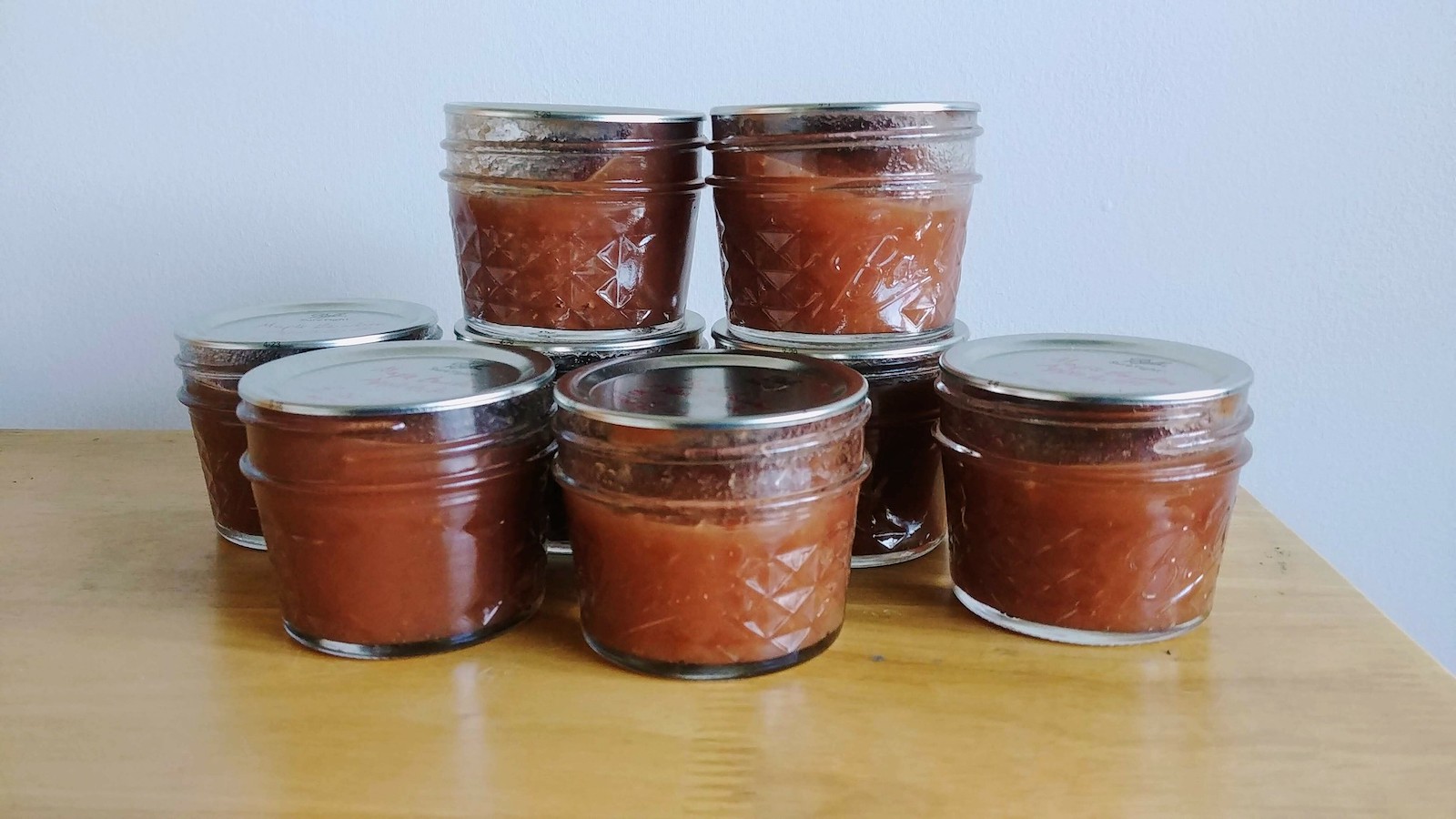Jars of homemade crushed tomatoes Photo by Suzy Morris under CC BY-NC 2.0</a>
Why preserve food?
After a summer and fall of abundance, you may have so many fruits and veggies you just cannot eat them all. Learning to can, pickle or preserve food enables you to save food for a year without a need for refrigeration. Whether you picked too many apples at the orchard, have a tree full of fruit in your yard, or got too ambitious with those end of season deals at the farmers’ market, preserving ensures nothing goes to waste. The holidays are a wonderful time to break out the literal fruits of your labor to bring back the color and sweetness of summer fruit well into the fall and winter.

Cans are removed from a hot water bath Photo credit: Colorado State University under Public Domain
But isn’t canning dangerous?
The main risk of canning is botulism, an odorless, flavorless toxin that can be fatal. But with care, attention, and the right equipment and recipes, you can absolutely preserve and can food safely. The most common and basic technique for canning uses a technique called a hot water bath - putting your sealed cans of food into boiling water to kill bacteria and vacuum seal the cans.
But the hot-water bath technique does not get hot enough to kill bacteria that causes botulism. However, this bacteria cannot survive in acidic environments like those created by most jams or the vinegar in pickles. That’s why the hot-water bath technique works only for high-acid foods like jams or pickles. If you want to can items like unpickled green beans or corn, which are not acidic, you will need to use a pressure canner, which gets hotter than a hot water bath.
Canning safely
First and foremost, you should make sure you are following a modern, tested, legitimate recipe as closely as you can. This will ensure that the food is acidic enough to kill any botulism-producing bacteria, and that your processing time kills off any other bacteria that could get you sick.
I love using family recipes for baking and cooking, but the USDA and extension offices specialized in the safety of canned foods do not recommend using older recipes for canning. According to PennState Extension “based on new laboratory research, certain recipes have been withdrawn and updated” because they use techniques that are now considered unsafe, such as sealing with paraffin wax.
In addition, Clemson extension notes that fruit and vegetable varieties grown today have different levels of acidity than they used to, meaning that older recipes might not be acidic enough to be safe. For a great, in-depth overview of how to can safely, the USDA recommends this free PDF download.
If you have a recipe you want to make handed down over generations, don’t despair - you can freeze it safely, or find a similar updated version online. And many local cooperative extension offices will test your recipes for you.

A beautiful selection of homemade jams on display. Photo credit: Lisa Ouellette under CC BY-NC-ND 2.0
What to make?
For a long time, I disliked jams and jellies, thinking of them as cloyingly sweet. I personally prefer tart, textured recipes that retain something of the original fruit. Luckily, there are many modern recipes that fit this profile.
Apple butter, a super concentrated cooked down version of applesauce, is traditionally made over a fire with a wooden paddle. Turns out, you can also make it in a slow cooker! Apple butter is equally delicious on dinner rolls and cottage cheese.
My favorite canning cookbook, Canning for A New Generation contains a recipe for pear-ginger preserves. But if you’re nervous about the hot water bath or not great about following directions, you can try this freezer jam recipe from Taste of Home. If you have plums on hand, it turns out that combining them with cardamom is one of the most delicious things on earth.
Either one is sure to impress your Thanksgiving dinner guests when you serve it alongside fresh rolls or bread. Alternatively, pair it with delicious cheeses and crackers on a charcuterie board as an appetizer.
If none of these recipes sparks your interest, Food in Jars is both a book and an excellent and reputable online resource, as are the recipes available for free on the Ball jar website. If following instructions isn’t your strong suit, freezer jam is a safer and easier route and a good way to get started.

Jars of homemade apple butter. Photo credit: sk under CC BY-NC-ND 2.0
What do you need?
For a hot water bath, you will need a pot big enough that the water can cover the jars inside it by at least an inch. You can buy canning pots, but if you’re making jam in half or quarter pint jars, any large stockpot should do.
You’ll also need to invest in some Ball Jars or similarly approved jars for canning. A jar lifter makes it easy to pull out the jars without getting burned, though tongs with rubber bands wrapped around them can also work. Here’s a comprehensive list from PennState on what equipment you’ll need.
When you’re ready to get started make sure you have all the ingredients you need for your recipe and plenty of time. Getting all that water boiling will take a while, and make your kitchen pretty stuffy. Luckily, fall-time canning is a lot more fun than doing it in the heat of summer!
Finally, make sure you have somewhere to rest and store your jars. You’ll need a spot for them to sit undisturbed for 12 hours after processing, and then a cool dry space where they can live for the next year - or until you gobble them up at the holidays.
